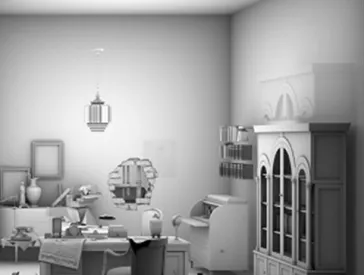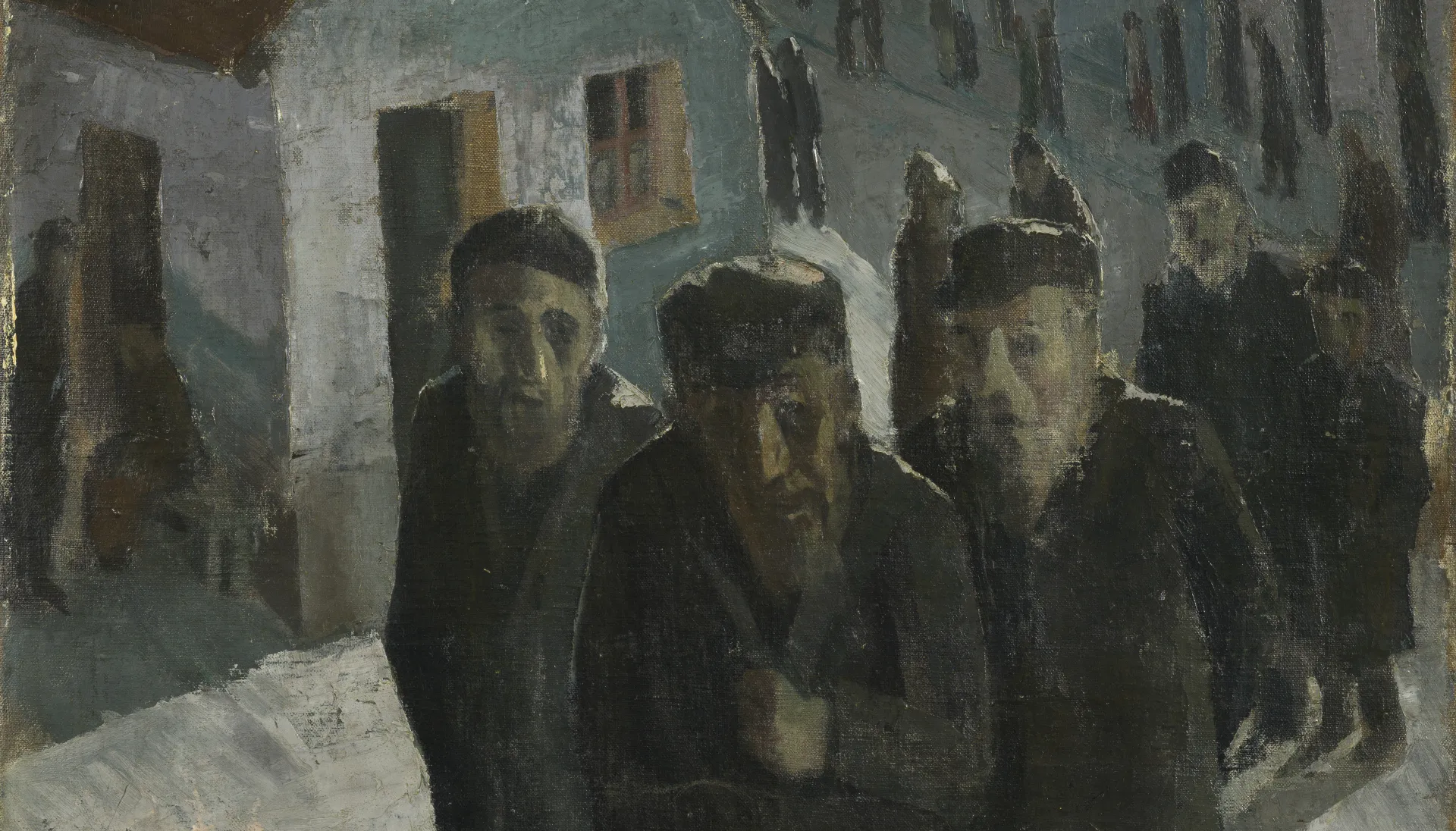
When the Canvas No Longer Carries the Painting
Our Conservator Developed a New Method of Conservation for the Double-sided Painting On the Way to the House of Prayer by Jakob Steinhardt
Franziska Lipp
Before a painting is hung in its place in the core exhibition, we conservators check its condition and carry out any necessary conservation treatment. When we first checked the framed painting On the Way to the House of Prayer by Jakob Steinhardt, we could not detect any serious damage initially.
All the greater was our surprise when we took it out of the decorative frame: fluctuating humidity, rusty nails and loose mounting in the decorative frame had led to large cracks and holes on the outer edges of the painting. Now the minute canvas fibers that had fallen away had formed a layer of brown dust in the frame. In this condition, the canvas offered little stability for the heavy oil paint applied thickly to the front and back. My task was to develop a new method to stabilize the canvas.
Step 1: Find suitable material
One way to preserve a painting’s badly damaged canvas edges is to stabilize them by attaching fabric to the reverse side of the damaged edge – conservators call this “strip lining”. For better stabilization this fabric is often glued to the back of the canvas right up to behind the painted area of the front. However, since in my case there was also a paint layer on the back of Steinhardt’s painting, the strip lining should cover as little of this area as possible.
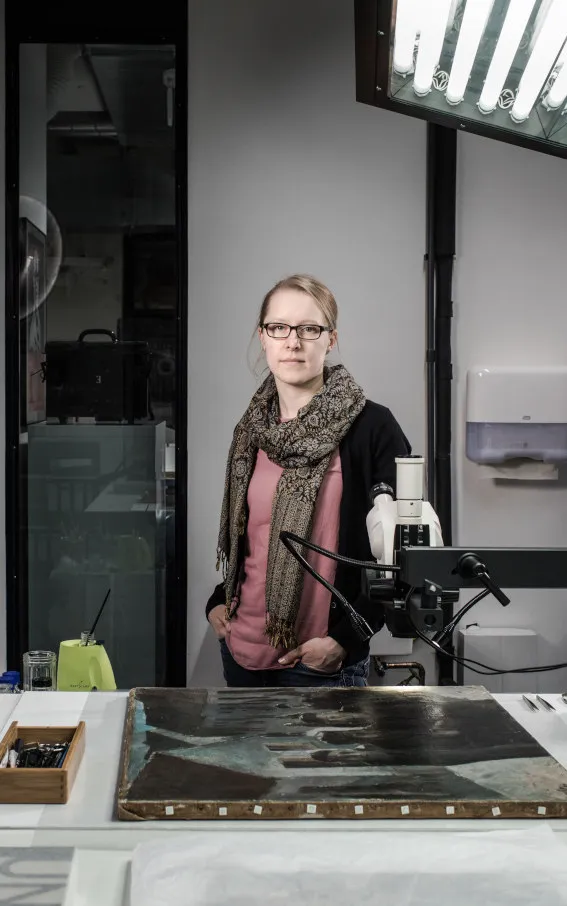 X
X
Franziska Lipp, conservator of paintings and polychrome sculptures; Jewish Museum Berlin, photo: Stephan Pramme

The painting before conservation: Jakob Steinhardt On the Way to the Prayer House, 1921 (front), portrait of a young man, date unknown (reverse side, crosswise to the front), oil on canvas, 61,6 x 63,6 x 2,4 cm; Jewish Museum Berlin, Inv.-Nr. 2000/200/0, photo: Jens Ziehe. Further informations about this painting can be found in our Online Collection.
Due to this particular challenge, I first did a series of tests to compare different materials that might be suitable for stabilizing severely damaged canvas edges. Through research and conversations with conservators of various specialties, I was able to identify numerous materials for my test series. I chose two kinds of Japanese tissue papers, two thin linen fabrics, and a fine silk fabric as the stabilizing fabrics. For the adhesive I decided for an acrylic adhesive blend and a ready-to-use adhesive film that has been proved successful in conserving canvases.
Two criteria are particularly important in conservation: the materials must last a long time without changing and, ideally, be completely removable. In this way, conservators can ensure that the painting is not damaged and that future conservations are not affected.
Since there is no stabilizing material that can meet all my requirements equally, the aim of the test series was to find out which combination of fabric or, paper, and adhesive is best suited for Steinhardt’s painting. In order to keep the covered area visible, I was looking for a very thin textile or paper that, combined with the adhesive, would achieve a high degree of transparency. At the same time, the strip lining should stabilize the delicate canvas sufficiently for it to be mounted on a new stretcher.
Step 2: The test series
For the test series, I combined each of the selected fabrics and papers with one of the two adhesives and attached them to a small test canvas similar in weave and thickness to the original. This allowed me to compare the combinations directly and evaluate the following properties:
- How well does the attached textile/paper adhere to the original canvas, even when folded and stretched?
- How effectively does the attached textile/paper stabilize the area of damaged canvas?
- How visible is the condition of the original canvas through the textile/paper?
- How much thicker is the stabilized area than the original canvas alone?
- How is the flexibility of the stabilized area compared to the original canvas?
- How easy is it to remove the strip lining without damage?
I achieved the best results with a fine silk fabric coated with a thin acrylic adhesive mixture. The warmth from a heating spatula was enough to soften the adhesive on the silk so that it became tacky again and the silk fabric adhered to the canvas without being soaked with adhesive. This combination also tested well on the corner of the original canvas.
The canvas damage and the test series in pictures
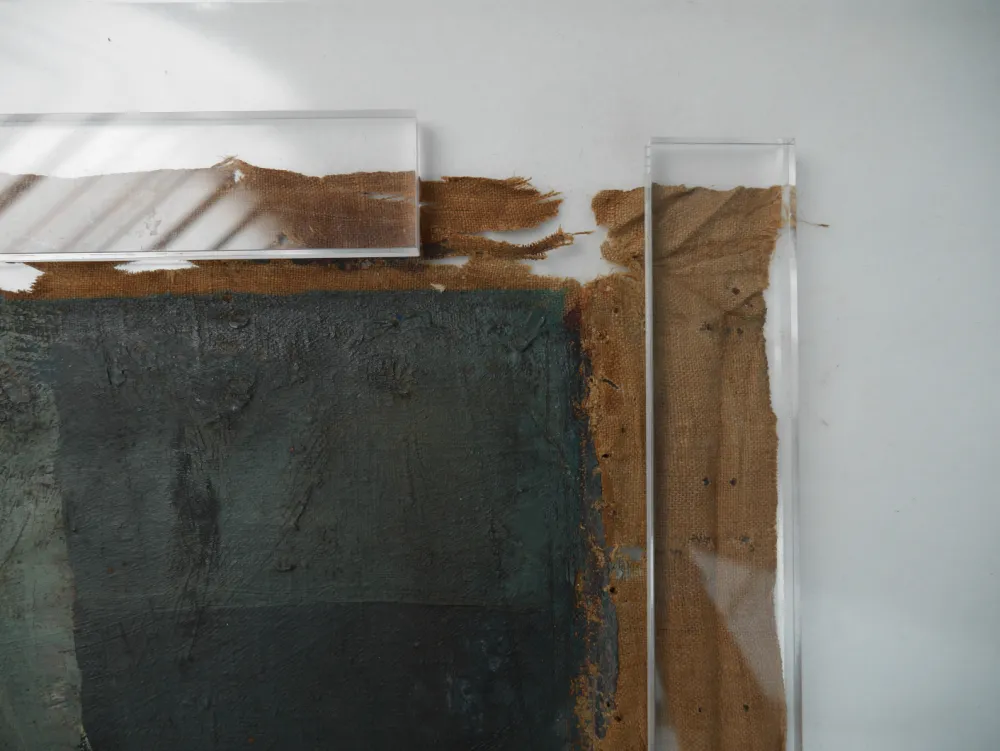
To enable work on the damaged canvas edges, I removed the stretcher and flattened the wrinkled edges of the canvas; Jewish Museum Berlin, photo: Franziska Lipp
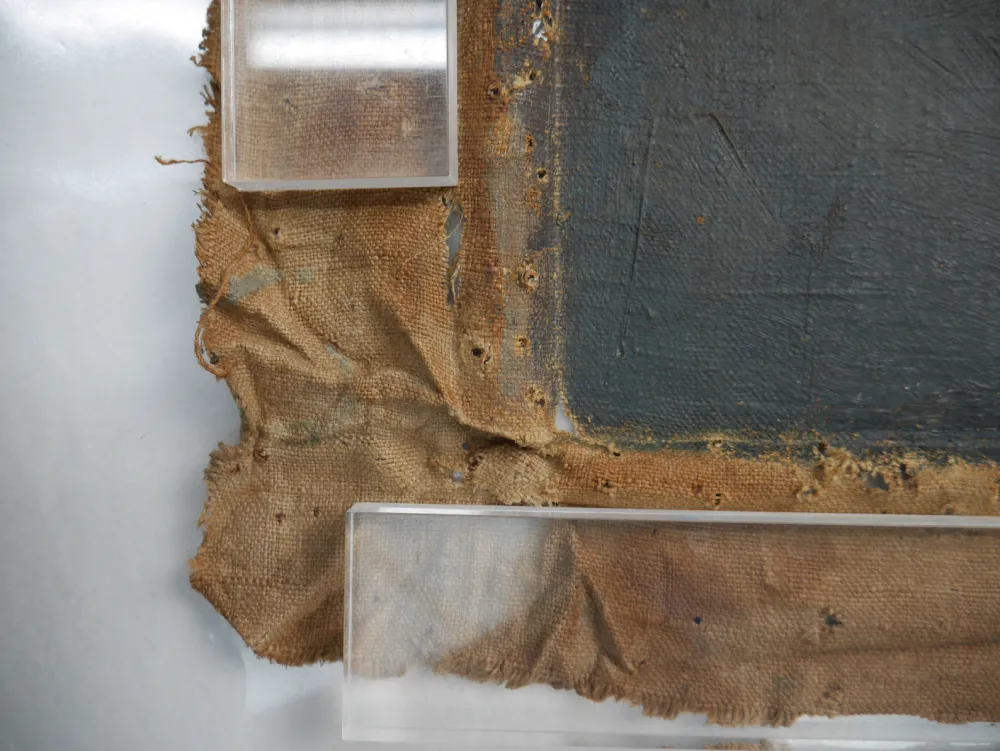
Many of the holes in the canvas edges of the painting, also caused by rusty nails, extended into the painted area; Jewish Museum Berlin, photo: Franziska Lipp
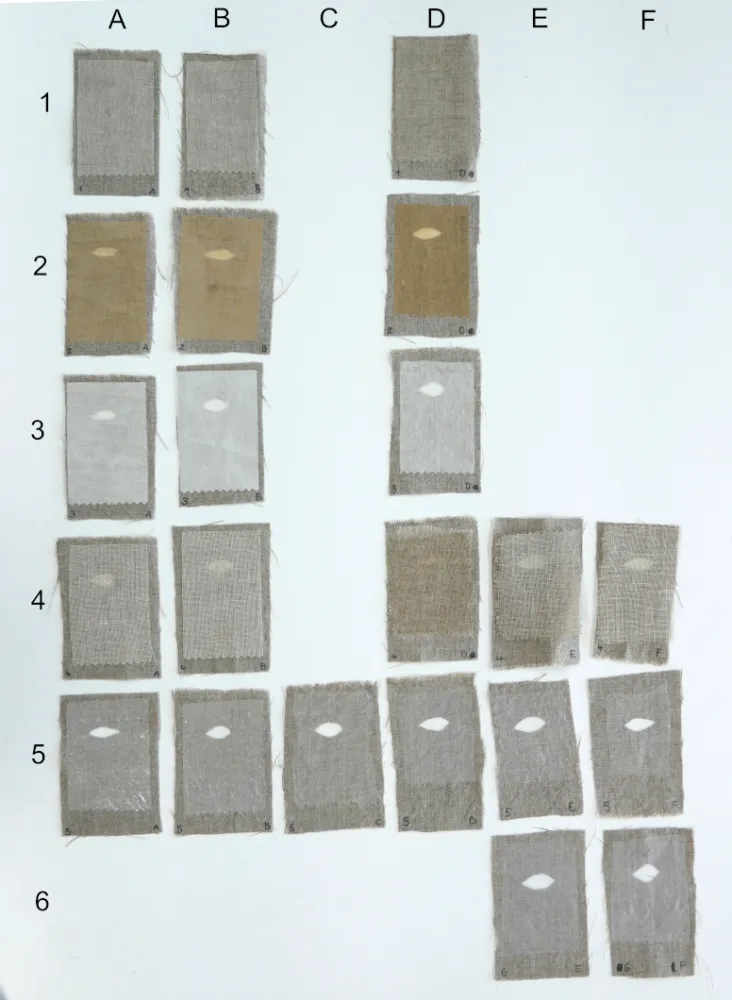
For the test series, I combined selected textiles and papers using two adhesive methods and attached them to small test canvases. This allowed me a direct comparison of their suitability for the strip lining; Jewish Musem Berlin, photo: Franziska Lipp
Step 3: The conservation
In preparation for the strip lining, I had already carefully cleaned the paint layer on the front and back before the test series. Since the original stretcher was very sharp-edged and unstable, I removed it to replace it later with a new one with rounded edges.
To separate the canvas from the stretcher, I placed the painting face down on an upholstered table and saw only the back of the painting for a long time.
For the stabilization work on the damage to the edges of the painting, I used the microscope in our workshop. With the help of this magnification, I first mend the cracks and holes with fine linen threads and canvas inserts. By using linen in lighter colour, the additions are clearly distinguishable from the original dark canvas. In the next step, I applied the silk fabric from the test series to the backside of the edges of the canvas. Since many holes in the canvas came right up to the painted layer, I could only achieve sufficient stabilization by attaching the silk fabric to the painted layer up to 5 millimeters in places. Due to the silk’s transparency, these painted areas are nevertheless still visible.
The conservation process in detail

To close the tears and holes in the canvas, I glued the individual torn threads to their respective counterparts. Missing areas are filled in with lighter canvas threads; Jewish Museum Berlin, photo: Franziska Lipp

In canvas areas with larger holes, I inserted cut fabric inserts. I glued the threads of these canvas pieces individually to their respective counterpart in the original canvas; Jewish Museum Berlin, photo: Franziska Lipp
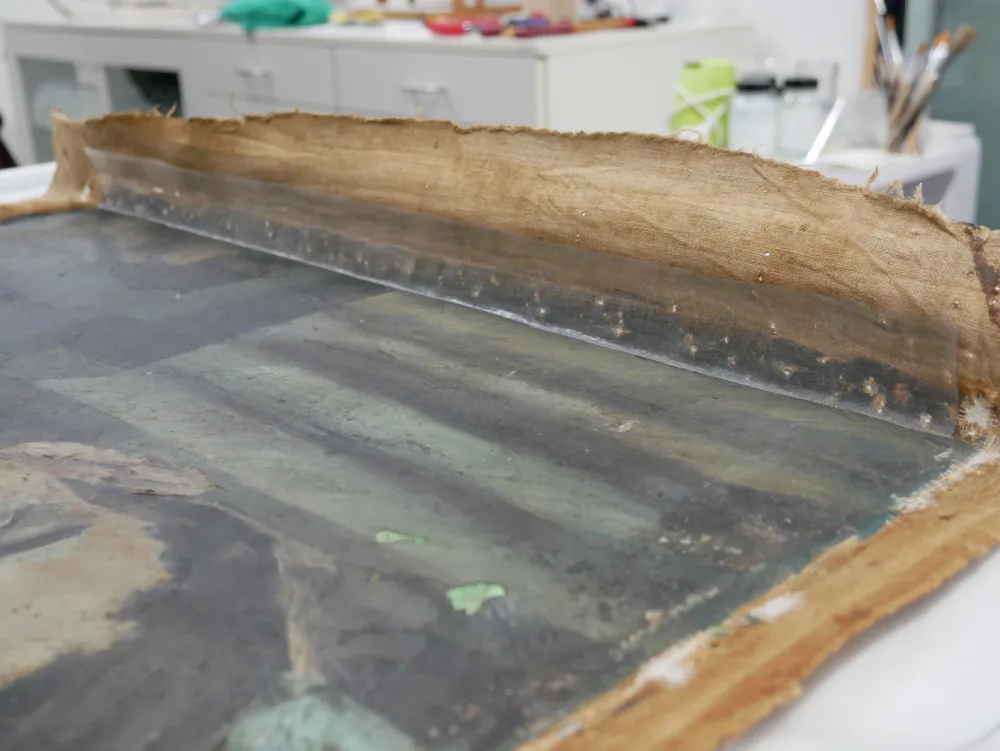
I stabilized the severely damaged edges of the painting by attaching a silk fabric strips to their backs; Jewish Museum Berlin, photo: Franziska Lipp
Once the canvas was stabilized, I was able to mount the painting on its new stretcher. It was only at this point that I saw the front side depicting On the Way to the House of Prayer again after months of work on the back. Finally, I checked the overall stability of the paint layer, filled small imperfections losses in the paint with putty, and retouched these areas.
The original stretcher was too unstable for reuse and would have damaged the canvas again with its sharp and splintering outer edges. Since we suspect that Jakob Steinhardt built this stretcher himself, we are storing it in the museum depot.
Step 4: Preparation for the exhibition
For the exhibition, the painting was framed and fitted with a protective transparent backing. This allows us conservators to see the condition of the canvas as well as the painting on the back without the arduous job of having to remove the painting from the decorative frame.
The painting after conservation
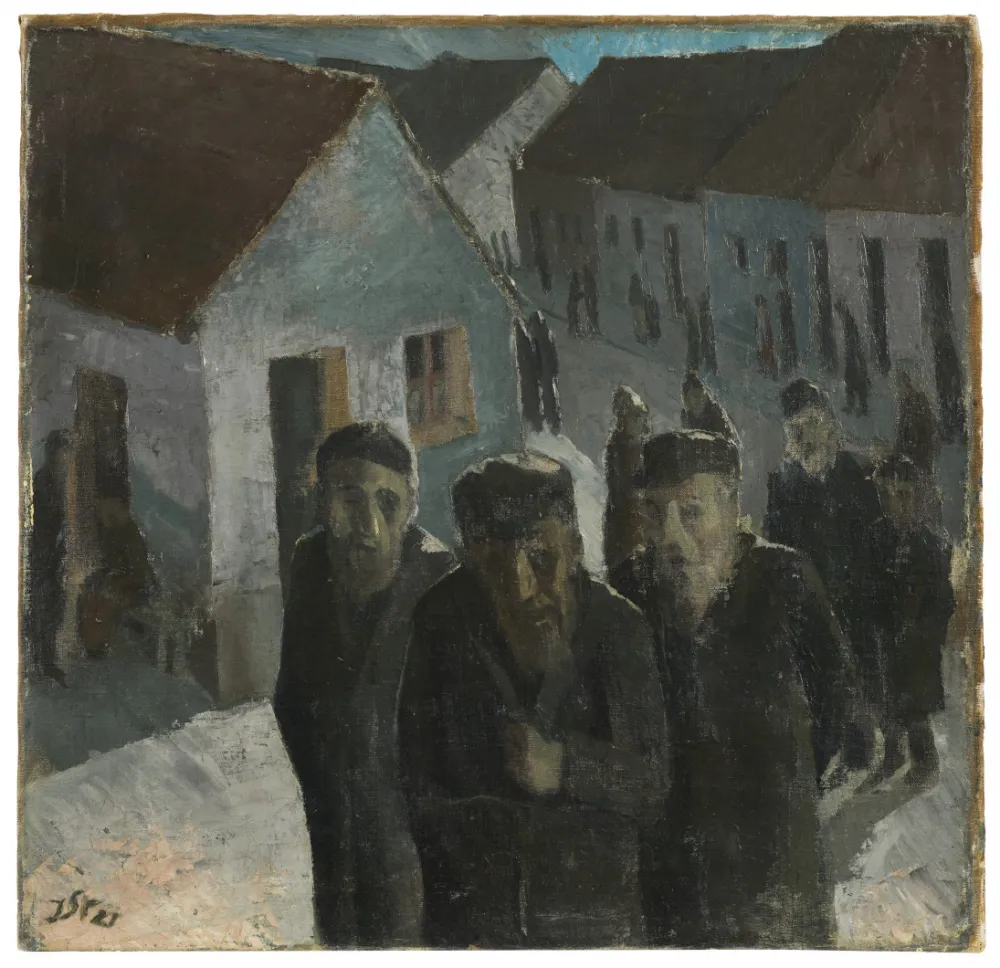
The front of Jakob Steinhardt’s painting On the Way to the Prayer House after restoration conservation, 1921, oil on canvas; Jewish Museum Berlin, Inv.-Nr. 2000/200/0; photo: Roman März
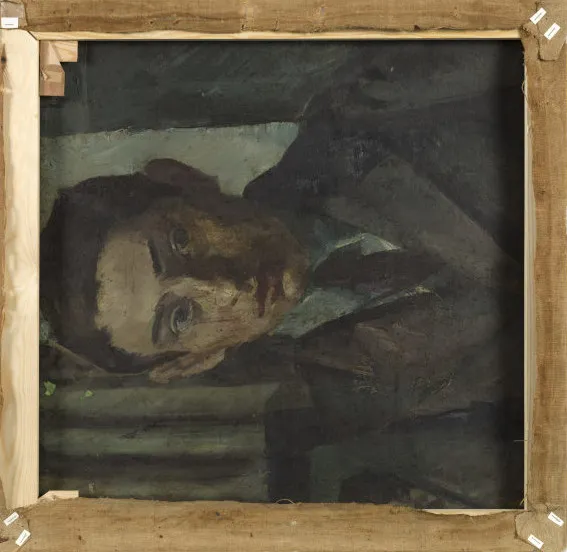
The reverse side of the painting depicting a young man by Jakob Steinhardt after restoration conservation; Jewish Museum Berlin, photo: Roman März
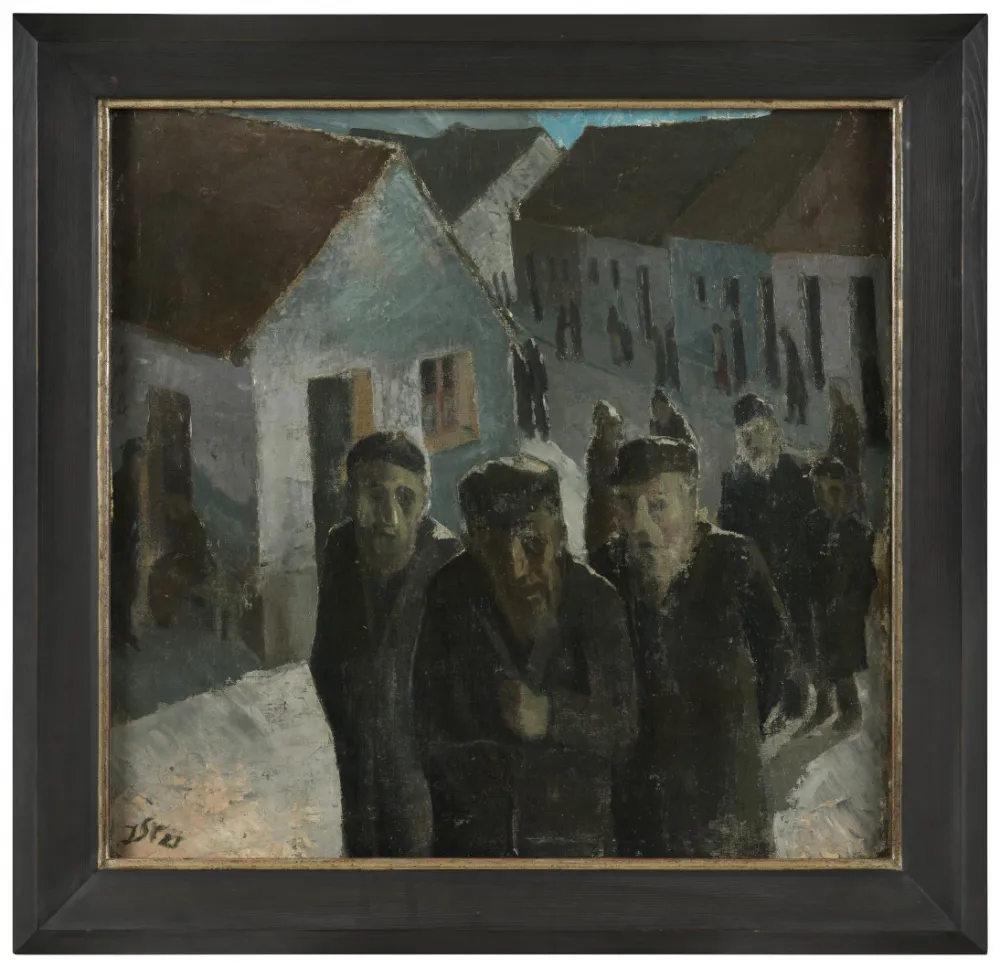
The framed painting On the Way to the Prayer House by Jakob Steinhardt, 1921, oil on canvas; Jewish Museum Berlin, Inv.-Nr. 2000/200/0; photo: Roman März
There are several double-sided paintings by Jakob Steinhardt in the Jewish Museum Berlin collection. If conservation is necessary, an adapted version of the method I developed can be used. The painting On the Way to the Prayer House as well as other works by the artist can be found in the core exhibition in the Art and Artistsroom. You can find more works by Jakob Steinhardt in our Online Collection
Citation recommendation:
Franziska Lipp (20202), When the Canvas No Longer Carries the Painting. Our Conservator Developed a New Method of Conservation for the Double-sided Painting On the Way to the House of Prayer by Jakob Steinhardt.
URL: www.jmberlin.de/en/node/7665



















